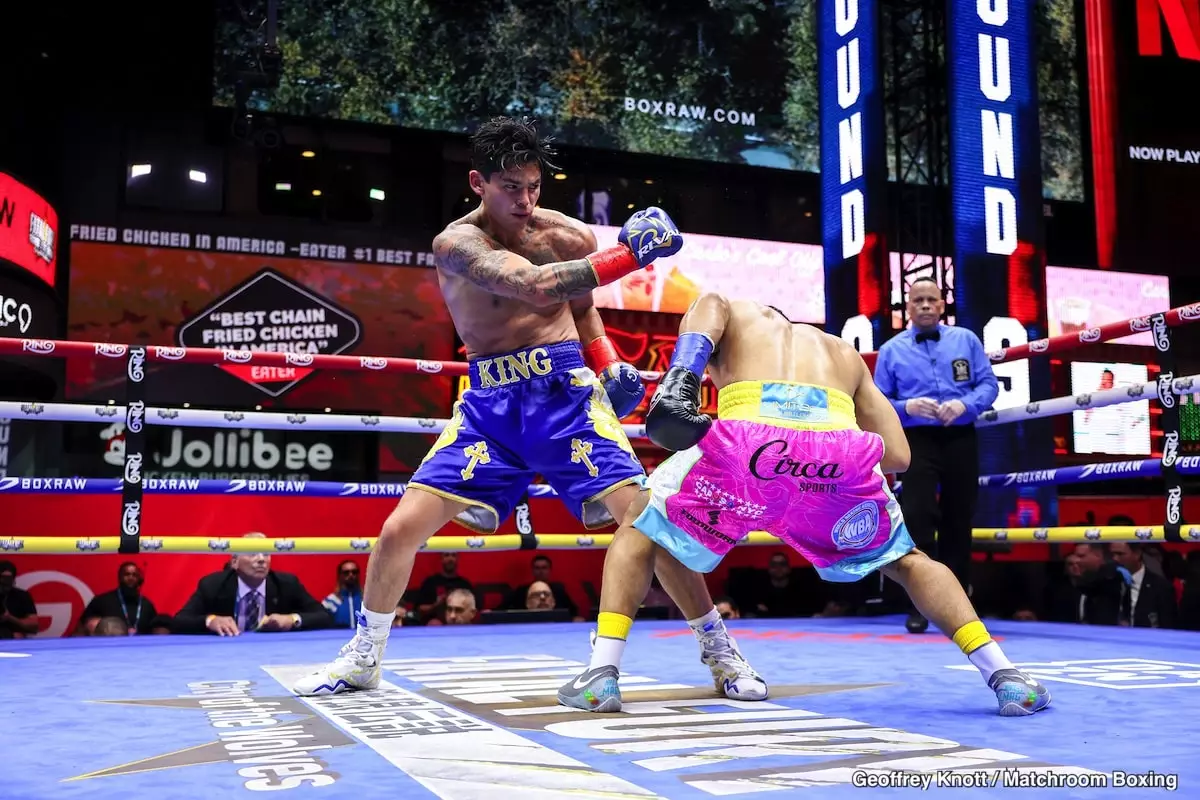In the glamorous world of boxing, the spotlight often shines brightly on those with charisma, social media followers, and marketability. Yet, when the gloves come off, it is raw talent and mental fortitude that determine one’s place in the ring. The recent bout between Ryan Garcia and Rolando ‘Rolly’ Romero brought this uncomfortable reality to light. Garcia’s performance in New York City not only raised eyebrows but also provoked a critical eye on the future of his boxing career. Critics, including fellow boxer Lionel Thompson, have suggested that perhaps Garcia should explore other avenues—like a traditional job or making waves on platforms like YouTube—if he cannot regain his footing in the ring.
Dissecting the Fight: A Shell of a Fighter
For the duration of their fight, Garcia (24-2, 20 KOs) resembled a shadow of the contender he purports to be. After being knocked down by Romero (17-2, 13 KOs) in the second round, Garcia displayed a shocking reluctance to engage. This was not the calculated aggression one expects from a fighter looking to claim a championship title; instead, it resembled a man walking on eggshells, terrified of further punishment. Thompson captured this sentiment eloquently, remarking that Garcia appeared ordinary—lacking the extraordinary qualities that set great champions apart. His reluctance to engage transformed the match into a defensive showcase, which frustrated spectators and analysts alike.
Garcia’s punch stats further illuminate this narrative: landing just 31.4% of his punches compared to Romero’s 20.2% highlights a significant issue in approach and delivery. The typical rhetoric surrounding Garcia has often elevated him to star status based only on his Instagram following and flashy lifestyle, but the reality was that he fought as if the stakes were far too high for a man of his experience—and this cowardice shows much more than mere numbers could convey.
The Fear Factor: A Detriment to Success
Fear often plays a pivotal role in combat sports. When an opponent executes a skillful maneuver—like Romero’s powerful left hook—it places psychological pressure on the opponent. Garcia’s inability to shake off that round-two knockdown reveals a deeper truth: he may not possess the mental fortitude required at the highest echelons of the sport. It’s an odd paradox, as he reminds us that sometimes talent must be married to courage; otherwise, the talent remains like an unexposed diamond.
Thompson’s detailed analysis of the bout suggests a major communication breakdown between Garcia and his trainer. In boxing, corner advice can make or break a fighter’s performance. The corner should rally a fighter, encouraging them to take calculated risks and not dwell in fear. Thompson questioned whether Garcia’s team offered suitable guidance, as being overly cautious merely led to a spiral of inaction and passivity, culminating in a lost opportunity for an otherwise talented fighter.
The Limitations of Ryan Garcia: Power and Strategy
In the boxing narrative, power is often a game-changer—but for Garcia, it seems limited. His left hook is commendable, yet his right hand is seemingly a vestigial trait, hardly utilized in his bouts. This imbalance forced him into an awkward position; his sole weapon was rendered ineffective due to his fear of getting caught by power punches from Romero. Thus, Garcia’s reluctance not only hampered his performance but perpetuated a cycle of doubt. Boxers need versatility, employing all their skills to adapt and overcome. Garcia’s fight playback demonstrated how critical it is to have a well-rounded arsenal; otherwise, it centers the fight around fear of vulnerability.
The Impasse of Promoters and Boxing’s Future
Interestingly, the boxing ecosystem has shifted in recent years, relying heavily on social media status instead of raw talent. Thompson aptly dubbed fighters like Garcia and his contemporaries “manufactured fighters,” highlighting the glaring issue within boxing: so much potential hinges on marketing rather than the intrinsic qualities of the athletes. While millions may watch them, the lasting impact of their performances—a true test of what makes a champion—often gets lost in the glitz.
This manufactured success leads to inevitable disappointments. With each lackluster performance, crucial questions arise: Can these fighters evolve and rise to the occasion? Or, will they continue to flounder within a system that rewards visibility over efficacy? As Garcia likely eyes a rematch with the likes of Devin Haney, one can’t help but wonder whether he has the capacity to grow. If the upcoming bouts reflect any semblance of similar fear and dependence on social media persona, his legacy may ultimately translate to a disappointing footnote in boxing history.
In a sport where glory comes from grit and determination, can Ryan Garcia harness the courage to emerge from his self-imposed shell and manifest a fighting spirit where his prowess can truly shine? We shall see, but one thing is for certain: the boxing arena demands more than just followers; it demands warriors.

